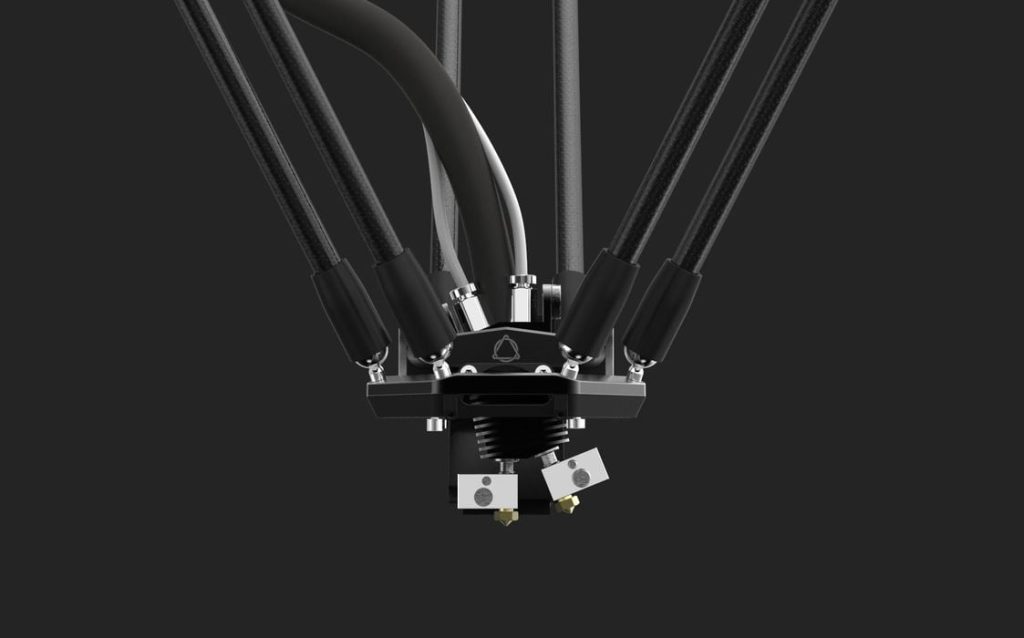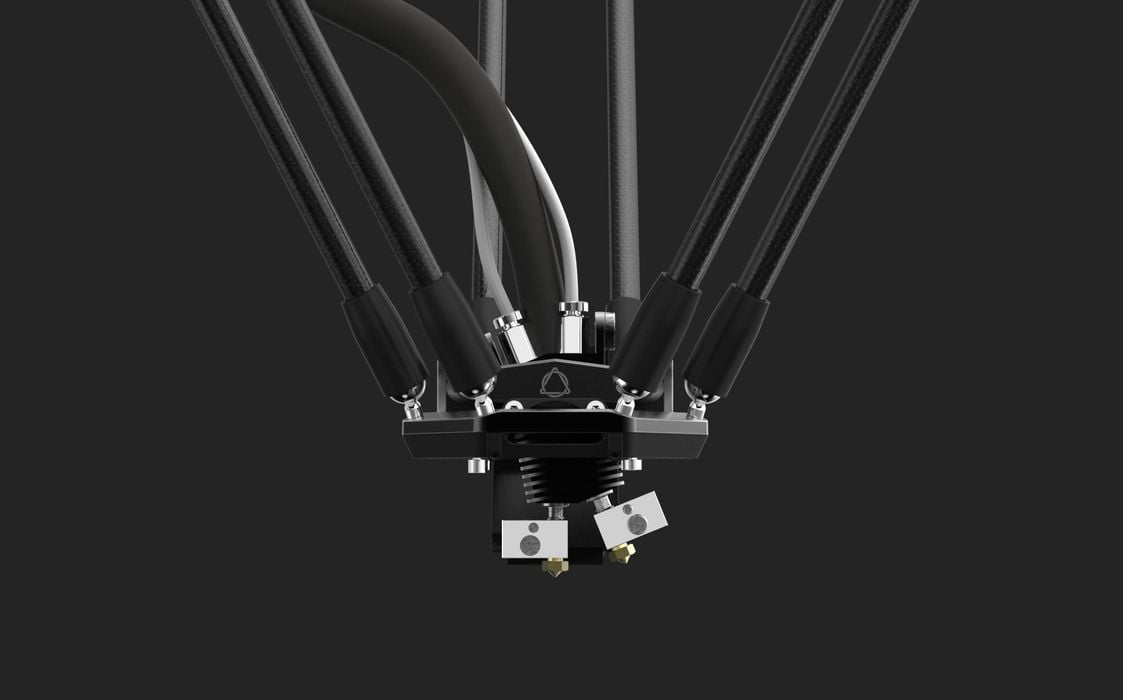
Earlier we published a thought piece on the notion of using carbon fiber rods for 3D printer frames.
In the piece I suggested that I was unaware of this being attempted.
I was wrong.
It turns out there is at least one desktop 3D printer using carbon fiber rods, according to Fabbaloo reader and researcher Jacques Lengaigne.
Lengaigne writes:
“I want to point out an interesting case: the delta 3d printer from Atom. This printer uses carbon fiber tubes for the print head mobile support assembly holding the nozzle (6 rods, installed in pair, and aluminum extrusion for the rest); the lightweight and rigidity of carbon fiber appears to offer good performance for delta configuration.
We have in our lab one of them, the Atom 1, which was expensive at the time but provides some good prints, despite a bit outdated firmware.”
This machine doesn’t exactly use the carbon fiber rods for the frame, but instead uses them for the critical delta toolhead, which is normally suspended by rods from the top of the machine. The delta motion system relies on the stiffness of the rods to ensure proper positioning of the toolhead.
This implementation makes sense, as the stiffer the rods holding the toolhead are, the more accurate the toolhead positioning will be.
Curiously, the product page doesn’t mention anything about carbon fiber construction used in the machine, even in the Chinese specifications. I think they should, as it would certainly provide those looking for a machine some additional confidence about the stiffness of the toolhead motion system. There may be other delta 3D printers out there using carbon fiber rods, as well.
It may be that the cost of carbon fiber rods meant the machine designers placed them only in the most critical position on the machine. If there is vibration in the frame, it may transfer to the carbon fiber toolhead assembly as a whole.
On the other hand, the price of the Atom 3.5 is listed at ¥99000, or US$13,700. That’s a very steep price for a desktop 3D printer of any kind, and even more unusual for one with “outdated firmware” as Lengaigne explained. You’d think with such a high price the machine could have been made of more carbon fiber parts. That may not be the actual price, but that’s what appears on the company’s official website.
Aside from my carbon fiber complaints, the Atom 3.5 toolhead is quite interesting. It’s actually a dual extrusion system, where two nozzles make up the toolhead. It appears that the toolhead can tip one way or the other to “activate” a nozzle during a print job.
This would enable the Atom 3.5 3D printer to print objects in more than one color or material, since the second nozzle could theoretically be at a different operating temperature to accommodate a different material.
The Atom 3.5 also allows swappable nozzles. The company offers two diameters: a standard 0.4mm nozzle, and an extra-wide 0.8mm nozzle for coarser, but faster printing.
One interesting possibility is to use one of each size on the Atom 3.5 at the same time: Perhaps one could print infill quickly using the larger nozzle and use the smaller nozzle for the finer details on the outside surface of the object?
In any case, the use of carbon fiber rods in 3D printer construction does appear to be possible.
Via Atom

